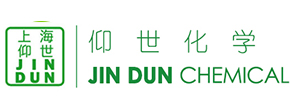117
How to Make Cotton Fabrics Waterproof with a Crosslinking Agent
2023/4/21
Cotton fabrics are widely used for clothing, bedding, and other textile products because of their natural comfort, breathability, and biodegradability. However, cotton fabrics also have some drawbacks, such as wrinkling easily and absorbing water quickly. These problems can affect the appearance, performance, and durability of cotton products.
One way to overcome these problems is to use a crosslinking agent to modify the structure and properties of cotton fibers. A crosslinking agent is a substance that can form covalent bonds between cellulose molecules, which are the main components of cotton fibers. By crosslinking cellulose molecules, the crosslinking agent can improve the crease resistance, dimensional stability, and water repellency of cotton fabrics.
There are many types of crosslinking agents that can be used for cotton fabrics, such as formaldehyde-based compounds, polycarboxylic acids, epoxy resins, and dialdehydes. However, some of these crosslinking agents have disadvantages, such as releasing toxic substances, causing yellowing or strength loss, or reducing the hydrophilicity of cotton fabrics.
In this article, we will introduce a novel crosslinking agent that can make cotton fabrics waterproof without compromising their hydrophilicity. This crosslinking agent is called acryloyl malic acid (AMA), which is a mono-substituted unsaturated acid with a vinyl group and a dicarboxylic group on either side. AMA can react with the hydroxyl groups of cellulose molecules through both esterification and graft polymerization, forming a hydrophilic and hydrophobic network on the surface of cotton fibers.
The advantages of using AMA as a crosslinking agent for cotton fabrics are:
To use AMA as a crosslinking agent for cotton fabrics, you need to follow these steps:
1. Prepare a solution of AMA in water with a concentration of about 10%. You may also add some catalysts, such as sodium hypophosphite or citric acid, to accelerate the reaction rate.
2. Immerse the cotton fabric in the AMA solution for about 30 minutes at room temperature. Make sure the fabric is fully wetted and evenly coated with the solution.
3. Squeeze out the excess solution from the fabric and dry it at 80°C for about 10 minutes.
4. Cure the fabric at 160°C for about 5 minutes to complete the crosslinking reaction.
The treated fabric will have a waterproof performance that can withstand more than 20 wash cycles without losing its effectiveness. The fabric will also have improved crease resistance and dimensional stability. The fabric will retain its original color and softness, and will not release any harmful substances.
AMA is a promising crosslinking agent that can make cotton fabrics waterproof while preserving their hydrophilicity. It is an environmentally friendly and cost-effective alternative to conventional crosslinking agents. It can also be applied to other cellulosic materials, such as linen, hemp, or bamboo.
One way to overcome these problems is to use a crosslinking agent to modify the structure and properties of cotton fibers. A crosslinking agent is a substance that can form covalent bonds between cellulose molecules, which are the main components of cotton fibers. By crosslinking cellulose molecules, the crosslinking agent can improve the crease resistance, dimensional stability, and water repellency of cotton fabrics.
There are many types of crosslinking agents that can be used for cotton fabrics, such as formaldehyde-based compounds, polycarboxylic acids, epoxy resins, and dialdehydes. However, some of these crosslinking agents have disadvantages, such as releasing toxic substances, causing yellowing or strength loss, or reducing the hydrophilicity of cotton fabrics.
In this article, we will introduce a novel crosslinking agent that can make cotton fabrics waterproof without compromising their hydrophilicity. This crosslinking agent is called acryloyl malic acid (AMA), which is a mono-substituted unsaturated acid with a vinyl group and a dicarboxylic group on either side. AMA can react with the hydroxyl groups of cellulose molecules through both esterification and graft polymerization, forming a hydrophilic and hydrophobic network on the surface of cotton fibers.
The advantages of using AMA as a crosslinking agent for cotton fabrics are:
- - It can improve the water repellency of cotton fabrics by reducing the water absorption and increasing the contact angle of water droplets on the fabric surface.
- - It can maintain or enhance the hydrophilicity of cotton fabrics by providing hydrophilic groups that can attract moisture from the air and keep the fabric soft and comfortable.
- - It can improve the crease resistance and dimensional stability of cotton fabrics by increasing the rigidity and strength of cellulose molecules.
- - It can avoid the problems of formaldehyde release, yellowing, or strength loss that are associated with some other crosslinking agents.
To use AMA as a crosslinking agent for cotton fabrics, you need to follow these steps:
1. Prepare a solution of AMA in water with a concentration of about 10%. You may also add some catalysts, such as sodium hypophosphite or citric acid, to accelerate the reaction rate.
2. Immerse the cotton fabric in the AMA solution for about 30 minutes at room temperature. Make sure the fabric is fully wetted and evenly coated with the solution.
3. Squeeze out the excess solution from the fabric and dry it at 80°C for about 10 minutes.
4. Cure the fabric at 160°C for about 5 minutes to complete the crosslinking reaction.
The treated fabric will have a waterproof performance that can withstand more than 20 wash cycles without losing its effectiveness. The fabric will also have improved crease resistance and dimensional stability. The fabric will retain its original color and softness, and will not release any harmful substances.
AMA is a promising crosslinking agent that can make cotton fabrics waterproof while preserving their hydrophilicity. It is an environmentally friendly and cost-effective alternative to conventional crosslinking agents. It can also be applied to other cellulosic materials, such as linen, hemp, or bamboo.

